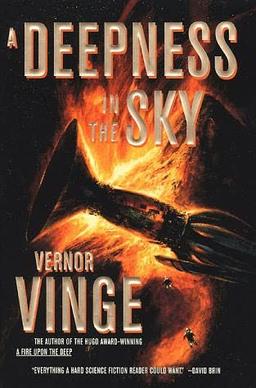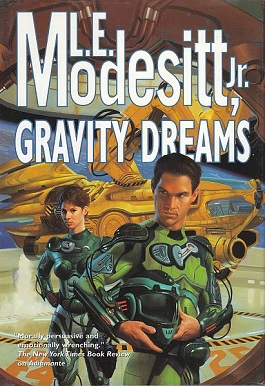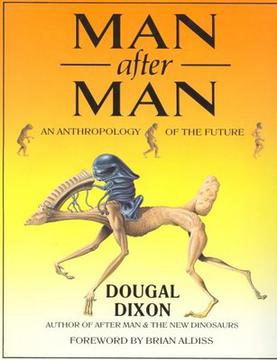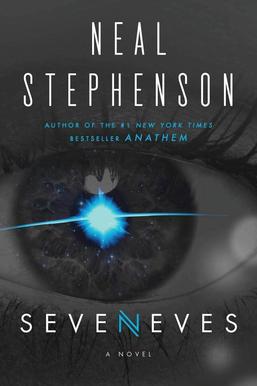Transhumanism is a philosophical and intellectual movement that advocates the enhancement of the human condition by developing and making widely available sophisticated technologies that can greatly enhance longevity, cognition, and well-being.
The Hainish Cycle consists of a number of science fiction novels and stories by Ursula K. Le Guin. It is set in a future history in which civilizations of human beings on planets orbiting a number of nearby stars, including Terra ("Earth"), are contacting each other for the first time and establishing diplomatic relations, and setting up a confederacy under the guidance of the oldest of the human worlds, peaceful Hain. In this history, human beings did not evolve on Earth but were the result of interstellar colonies planted by Hain long ago, which was followed by a long period when interstellar travel ceased. Some of the races have new genetic traits, a result of ancient Hainish experiments in genetic engineering, including people who can dream while awake, and a world of hermaphroditic people who only come into active sexuality once a month, not knowing which sex will manifest in them. In keeping with Le Guin's style, she uses varied social and environmental settings to explore the anthropological and sociological outcomes of human evolution in those diverse environments.
The term superhuman refers to humans, human-like beings or beings with qualities and abilities that exceed those naturally found in humans. These qualities may be acquired through natural ability, self-actualization or technological aids. The related concept of a super race refers to an entire category of beings with the same or varying superhuman characteristics, created from present-day human beings by deploying various means such as eugenics, euthenics, genetic engineering, nanotechnology, and/or brain–computer interfacing to accelerate the process of human evolution.

The Lazarus Effect (1983) is the third science fiction novel set in the Destination: Void universe by the American author Frank Herbert and poet Bill Ransom. It takes place some time after the events in The Jesus Incident (1979).
The ethics of technology is a sub-field of ethics addressing the ethical questions specific to the Technology Age, the transitional shift in society wherein personal computers and subsequent devices provide for the quick and easy transfer of information. Technology ethics is the application of ethical thinking to the growing concerns of technology as new technologies continue to rise in prominence.

A Deepness in the Sky is a science fiction novel by American writer Vernor Vinge. Published in 1999, the novel is a loose prequel to his earlier novel A Fire Upon the Deep (1992). The title is coined by one of the story's main characters in a debate, in a reference to the hibernating habits of his species and to the vastness of space.

The Saga of Recluce is a series of fantasy novels written by L. E. Modesitt Jr. The initial novel in the series, The Magic of Recluce, was published in 1991. The series is still in publication with the latest novel published in November 2023. In 2015 Modesitt stated that the 20 novels in the Recluce series had sold nearly three million copies.

The Forever Hero is a trilogy of science fiction novels by American writer L. E. Modesitt, Jr. These books were some of the first novels L. E. Modesitt ever published. Like most of his early work, the books are characterised by heavy usage of onomatopoeia, and a tendency to describe the characters by their physical appearance rather than name. The books have been published as both an omnibus and separately. The three novels are Dawn for a Distant Earth (1987), The Silent Warrior (1987), and In Endless Twilight (1988).

The Ware Tetralogy is a series of four science fiction novels by author Rudy Rucker: Software (1982), Wetware (1988), Freeware (1997) and Realware (2000).

Gravity Dreams is a 1999 science fiction novel by L. E. Modesitt, Jr.

Man After Man: An Anthropology of the Future is a 1990 speculative evolution and science fiction book written by Scottish geologist and palaeontologist Dougal Dixon and illustrated by Philip Hood. The book also features a foreword by Brian Aldiss. Man After Man explores a hypothetical future path of human evolution set from 200 years in the future to 5 million years in the future, with several future human species evolving through genetic engineering and natural means through the course of the book.
The Saga of the Skolian Empire, informally called the Skolian Saga or Tales of the Ruby Dynasty, is a series of science fiction novels, novellas and novelettes by Catherine Asaro, revolving around characters from an interstellar empire known as the Skolian Empire and their power struggle with the rival Eubian Concord. The plot of the book unfolds over several generations of characters and revolves around political intrigues, but also contains subplots regarding physics, bio-enhancements, virtual computer networks, romance, mathematics, and military conflict as it is affected by superluminal space travel.
The Alliance–Union universe is a fictional universe created by American writer C. J. Cherryh. It is the setting for a future history series extending from the 21st century into the far future.
The Spellsong Cycle is a fantasy series written by L. E. Modesitt Jr. Set in the fictional world of Erde, it is notable for its system of magic, based on music and song.

Flash is a science fiction novel by American writer L. E. Modesitt, published in 2004.
This article is a summary of the 1970s in science and technology.

The Quiet War is a 2008 science fiction novel written by Paul McAuley. It was initially published by Gollancz on 16 October 2008. The novel was an Arthur C. Clarke Award Nominee in 2009.

Seveneves is a science fiction novel by Neal Stephenson published in 2015. The story tells of the desperate efforts to preserve Homo sapiens in the wake of apocalyptic events on Earth after the unexplained disintegration of the Moon and the remaking of human society as a space-based civilization after a severe genetic bottleneck.

Children of Time is a 2015 science fiction novel by author Adrian Tchaikovsky. The novel follows the evolution of a civilization of genetically modified Portia labiata (arachnoid) on a terraformed exoplanet, guided by an artificial intelligence based on the personality of one of the human terraformers of the planet.
Bioconservatism is a philosophical and ethical stance that emphasizes caution and restraint in the use of biotechnologies, particularly those involving genetic manipulation and human enhancement. The term "bioconservatism" is a portmanteau of the words biology and conservatism.











